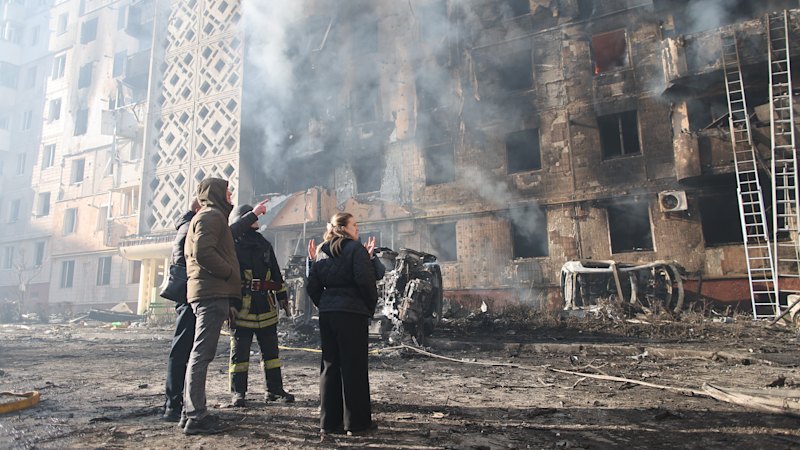
US President Donald Trump’s recent peace proposal for Ukraine has sparked significant backlash in Kyiv, as the plan suggests halving Ukraine’s army and ceding territory to Russia. This comes at a time when the US is implementing tougher oil sanctions aimed at cutting off valuable revenue streams to Moscow.
Trump’s proposal was sent to Ukrainian President Volodymyr Zelensky ahead of potential talks to discuss these concessions, despite strong objections from Ukrainian political leaders who are advocating for a more forceful stance against the Kremlin.
Reactions from Kyiv
Ukrainian Prime Minister Yulia Svyrydenko has voiced her opposition to the US plan, emphasizing that the current pressure on Russia is effective and should be intensified. “While Russia continues killing innocent civilians, destroying homes, and targeting critical infrastructure, the strategy of pressure on Russia is proving effective,” she stated. “It is crucial to further strengthen energy and financial sanctions against the aggressor state.”
Svyrydenko’s comments followed a meeting with US Army Secretary Dan Driscoll in Kyiv, where discussions about the peace proposal took place. President Zelensky confirmed his willingness to engage in talks, stating on Telegram, “Our teams – Ukraine and the USA – will work on the points of the plan to end the war. We are ready for constructive, honest and prompt work.”
The Controversial Proposal
The American peace plan reportedly includes 28 points, one of which suggests Ukraine relinquish land in the Donbas region to Russia. Additionally, the draft proposes a significant reduction in Ukraine’s defense forces and the abandonment of long-range missiles capable of reaching Russian targets. While the plan appears to offer an American security guarantee, Ukrainian leaders have rejected the idea of weakening their military capabilities, fearing future threats from Russia.
Oleksandr Merezhko, head of the foreign affairs committee in Ukraine’s parliament, criticized the plan as “absolutely senseless,” reflecting the widespread disapproval among Ukrainian officials.
International Perspectives and Ongoing Conflict
The peace proposal has emerged amid escalating violence, with Russia launching 476 drones and 48 missiles at Ukraine in a single night, resulting in 26 fatalities and numerous injuries. European Commission foreign policy chief Kaja Kallas acknowledged the US effort to broker peace but pointed out the lack of commitment from Moscow, stating, “For any plan to work, it needs the Ukrainians and Europeans on board. We have to understand that in this war there is one aggressor and one victim. We haven’t heard of any concessions on the Russian side.”
Meanwhile, the US is set to enforce stricter sanctions on Russian oil exports, targeting major suppliers Lukoil and Rosneft. These measures are part of a broader strategy to curtail Moscow’s financial resources, with some buyers already reducing their reliance on Russian oil to avoid potential repercussions from the American sanctions regime.
Historical Context and Future Implications
This development follows a meeting three weeks ago between Trump’s special envoy, Steve Witkoff, and senior Russian official Kirill Dmitriev in Florida. Despite these discussions, Kremlin spokesman Dmitry Peskov has stated that no consultations are currently taking place.
The proposed peace plan and subsequent sanctions represent a significant shift in US foreign policy towards Russia and Ukraine. As tensions continue to rise, the international community remains divided on the best approach to achieving lasting peace in the region.
Looking ahead, the outcome of the proposed talks between the US and Ukraine could have profound implications for the geopolitical landscape in Eastern Europe. The balance between diplomatic negotiations and military strategy will be crucial in determining the future of Ukraine’s sovereignty and regional stability.






